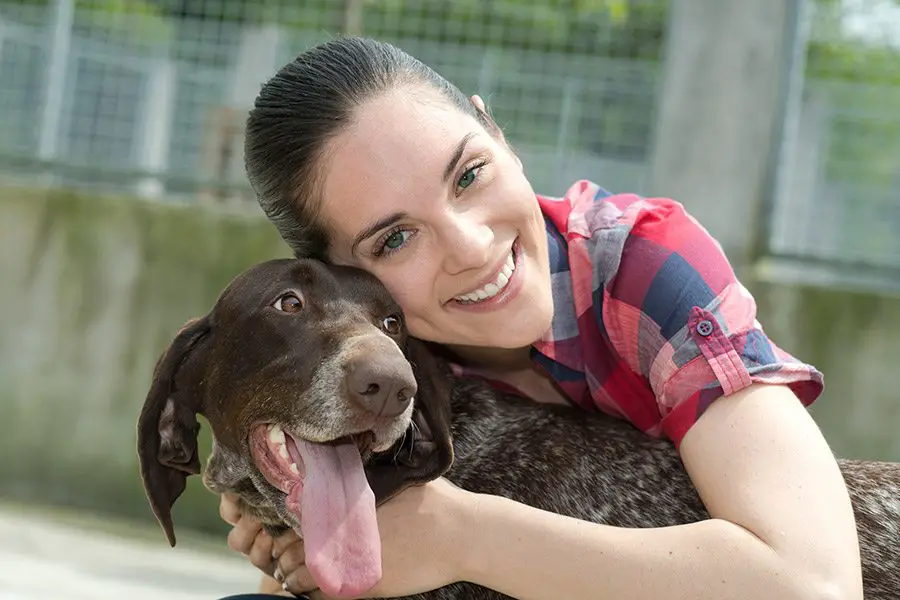
Dog looking for a boss is a well-known slogan for relocating shelter animals.
Where most dogs used to wait for an owner for years, attention for these animals has increased immensely. But for a successful adoption, a match is crucial.
How is a match between owner and dog measured?
How is the behavior of the shelter dog measured? ] Read all about which shelter dog suits you!
Content of this article
Dog looking for boss
Dog looking for boss is the catchy slogan to draw attention to the placement of shelter dogs. The message is short, clear and of course evokes association with the TV program that ladies find for agricultural business owners. Because a lid fits on every jar!
But find the lid!
Not only in human love do we have this problem. Pets also regularly lack love, dedication and a place of their own. Because how do you find someone who goes through the fire for this dog?
About ten years ago, the average shelter dog was waiting for a new home for a year or more. However, with the popularity of the Internet, accessibility for these dogs also increased.
They were more easily brought to the attention of a wider audience. More people could read about the dog without obligation and share his information.
In addition, there have been many campaigns to put shelter animals in the limelight. As a result, when purchasing a dog, people increasingly think of a dog shelter. And how about the attention for foreign stray dogs?
Often, however, a dog cannot simply be placed at every house. In addition to their own character that must click with a potential new owner, shelter dogs often have a backpack. They can often have changed ownership, been poorly educated, or had traumatic experiences.
This is not always the case. But most dogs will have to get used to a new life. But how do you know which owner is suitable for a dog?
Behavioral testing in dogs
When dogs are brought to a shelter, they will first have a few weeks to get used to their environment. They are helped to pick up the daily rhythm in the shelter and are monitored by a vet. In this way, health is assessed and the dog comes to rest.
A transition to the shelter can be very drastic.
After a few weeks, it is decided whether the dog is ready to start the adoption process. This means that his character and behavior will be mapped to find the best place for him.
One of the best known tests used for this is the MAG test. MAG stands for 'Socially Acceptable Behavior', which focuses on the character and behavior of the dog in different situations.
This includes contact with other dogs, people, objects, but also confidence in unknown situations and problems such as feeding time.
In addition, tests are also done to give the dog a certain character profile. Many different character traits are indicated here, which can be compared to the qualities of interested parties.
Think of terms such as calm, busy, affectionate, shy, confident, insecure, investigative, restrained, etc.
match
The behavioral tests provide information about the character and behavior of the dog in different situations. This information does not offer a 100% guarantee for future behavior, but when using a good, validated test (such as the MAG test) one can draw conclusions.
It is important that the dog is in the right is currently being tested. So not during the acclimatization period in the shelter, where the dog is still overrun by all new impressions. The test must also be carried out consistently, by a professional behavioral expert who is experienced in administering the test.
From the test results, one can search for the right owner with the right living conditions. The dog is presented outside, after which people who are interested report. These people first have an intake interview and a meeting with the dog, before the interest is treated.
This involves looking at the nature of the interested parties and the life they have to offer the dog. Are they at home a lot, do they have children, do they do a lot of things, do they have several dogs? Sometimes experience with a specific breed or behavioral problem is an advantage.
Next, it is examined whether these behavioral characteristics and circumstances will benefit the dog. In the meantime, the "click" between the interested parties and the dog is also examined. Is the interaction going well?
If all parts show positive, one can start a practice period. The dog will go home and the interested parties will keep in touch with the shelter. Is this period going well, according to the interested parties and the shelter?
Then one can proceed to adoption.
Successful relocation
The dog is looking for a boss – concept works very well in the Netherlands. About 90 percent of the shelter animals get a new home. That is enormous!
Unfortunately, the other 10 percent is less fortunate.
Fortunately, we have a non-euthanasia policy for shelter animals in the Netherlands. This means that no shelter animals are put to sleep until there is no other option. This means that a dog cannot be put to sleep because he is "too long" in a shelter.
With long asylum seekers, animals from shelters are sometimes exchanged among themselves. At a different location, a dog has a new chance to find a master.
So falling asleep only happens when an animal is seriously ill. This is always determined and performed by a veterinarian.
Also, very occasionally, animals are put to sleep that showed very aggressive or extremely fearful behavior in the behavioral tests. It is decided that these animals cannot be safely relocated, necessitating euthanasia. Fortunately, this is not often the case. We are only talking about very extreme cases here.
But every jar, no matter how sweet, busy, scared or cozy, needs the right, patient, loving and sometimes experienced lid.

